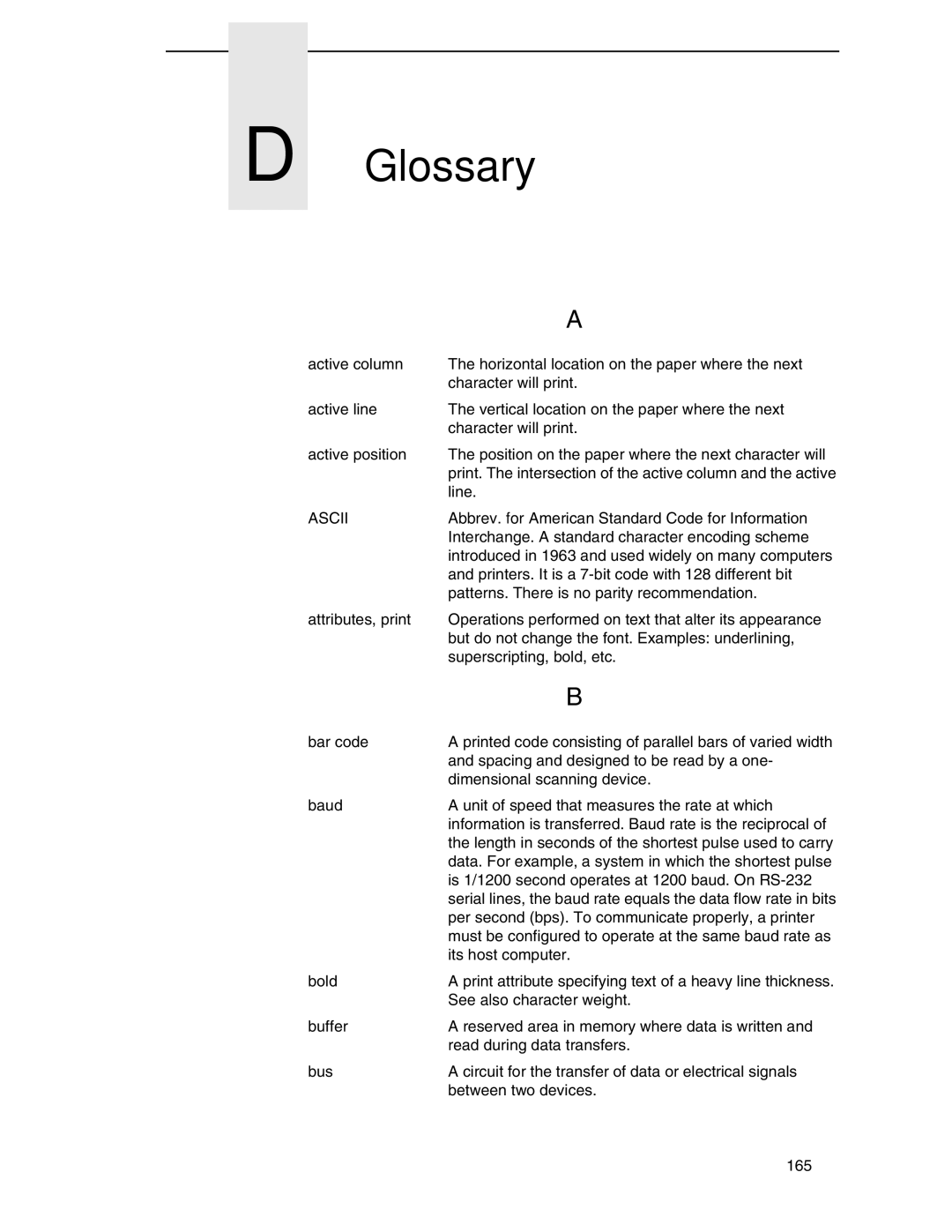
D Glossary
| A |
active column | The horizontal location on the paper where the next |
| character will print. |
active line | The vertical location on the paper where the next |
| character will print. |
active position | The position on the paper where the next character will |
| print. The intersection of the active column and the active |
| line. |
ASCII | Abbrev. for American Standard Code for Information |
| Interchange. A standard character encoding scheme |
| introduced in 1963 and used widely on many computers |
| and printers. It is a |
| patterns. There is no parity recommendation. |
attributes, print | Operations performed on text that alter its appearance |
| but do not change the font. Examples: underlining, |
| superscripting, bold, etc. |
| B |
bar code | A printed code consisting of parallel bars of varied width |
| and spacing and designed to be read by a one- |
| dimensional scanning device. |
baud | A unit of speed that measures the rate at which |
| information is transferred. Baud rate is the reciprocal of |
| the length in seconds of the shortest pulse used to carry |
| data. For example, a system in which the shortest pulse |
| is 1/1200 second operates at 1200 baud. On |
| serial lines, the baud rate equals the data flow rate in bits |
| per second (bps). To communicate properly, a printer |
| must be configured to operate at the same baud rate as |
| its host computer. |
bold | A print attribute specifying text of a heavy line thickness. |
| See also character weight. |
buffer | A reserved area in memory where data is written and |
| read during data transfers. |
bus | A circuit for the transfer of data or electrical signals |
| between two devices. |
165
